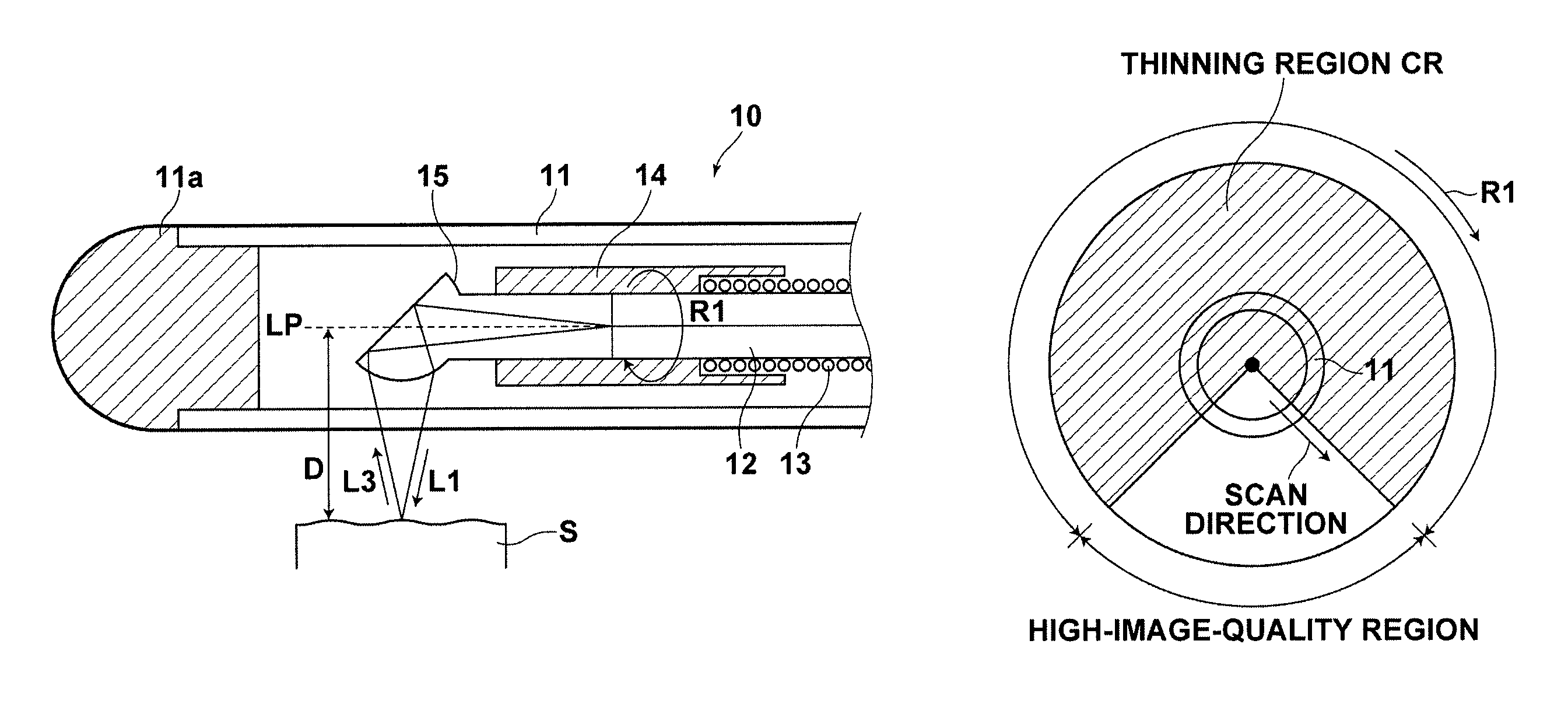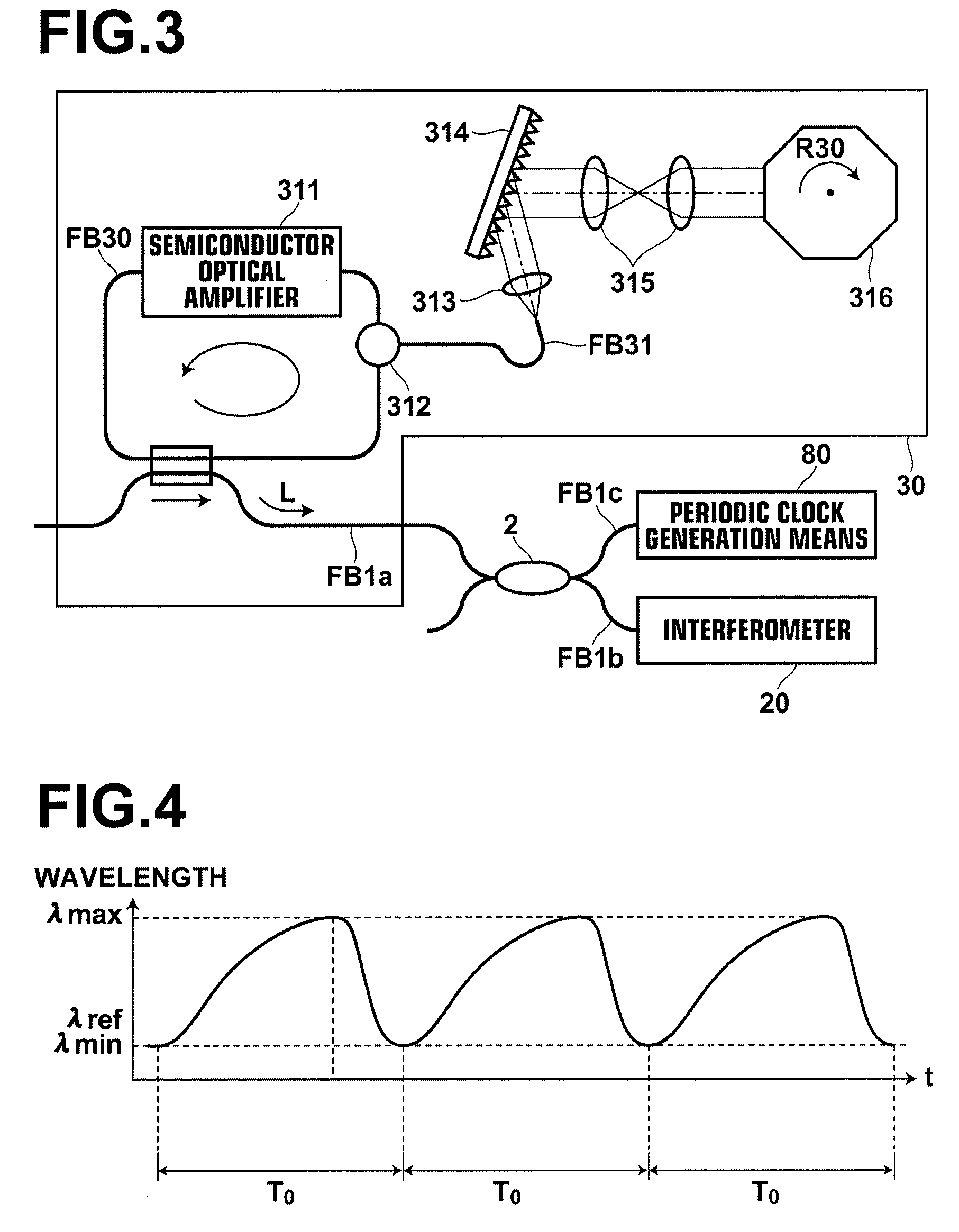Method and system for producing tomographic image by optical tomography with processing of interference light signals
a technology of interference light signal and optical tomography, which is applied in the field of method and system for producing optical tomographic images by oct, can solve the problems of low motion-image response characteristic of tomographic images, and achieve the effects of reducing data processing amount, and improving motion-image response characteristi
- Summary
- Abstract
- Description
- Claims
- Application Information
AI Technical Summary
Benefits of technology
Problems solved by technology
Method used
Image
Examples
Embodiment Construction
[0052]Hereinafter, embodiments of a system for producing tomographic images by optical tomography according to the present invention will be described with reference to drawings. FIG. 1 is a schematic diagram illustrating the configuration of a system for producing tomographic images by optical tomography according to a preferred embodiment of the present invention. A system 1 for producing tomographic images by optical tomography obtains tomographic images of measurement target S, such as tissue or cells in the body cavities of living organisms (in vivo), by SS-OCT (Swept Source OCT) measurement by inserting an optical probe 10 into the body cavities. The system 1 for producing tomographic images by optical tomography includes the optical probe 10, an interferometer 20, a light source unit 30, a periodic clock generation means 80, an A / D (analog to digital) conversion unit 90, a tomographic image processing means 100, a display device 110 and the like.
[0053]FIG. 2 is a schematic di...
PUM
 Login to View More
Login to View More Abstract
Description
Claims
Application Information
 Login to View More
Login to View More - R&D
- Intellectual Property
- Life Sciences
- Materials
- Tech Scout
- Unparalleled Data Quality
- Higher Quality Content
- 60% Fewer Hallucinations
Browse by: Latest US Patents, China's latest patents, Technical Efficacy Thesaurus, Application Domain, Technology Topic, Popular Technical Reports.
© 2025 PatSnap. All rights reserved.Legal|Privacy policy|Modern Slavery Act Transparency Statement|Sitemap|About US| Contact US: help@patsnap.com



